Related Research Articles

Freikorps were irregular German and other European military volunteer units, or paramilitary, that existed from the 18th to the early 20th centuries. They effectively fought as mercenaries or private military companies, regardless of their own nationality. In German-speaking countries, the first so-called Freikorps were formed in the 18th century from native volunteers, enemy renegades, and deserters. These, sometimes exotically equipped, units served as infantry and cavalry ; sometimes in just company strength and sometimes in formations of up to several thousand strong. There were also various mixed formations or legions. The Prussian von Kleist Freikorps included infantry, jäger, dragoons and hussars. The French Volontaires de Saxe combined uhlans and dragoons.

The United Baltic Duchy, or alternatively the Grand Duchy of Livonia, was the name of a short lived state during World War I that was self proclaimed by leaders of the local Baltic German nobility. The attempt to establish a new client state of the German Empire on the territory of what is now Latvia and Estonia was made in 1918, during the German occupation of the former Courland, Livonian and Estonian governorates of the Russian Empire which had ceased to exist after the Bolshevik coup in 1917. The unsuccessful proclamation of a pro-German duchy was first made in April 1918, after the Republic of Estonia had already formally declared full independence.

The Silesian Uprisings were a series of three uprisings from August 1919 to July 1921 in Upper Silesia, which was part of the Weimar Republic at the time. Ethnic Polish and Polish-Silesian insurrectionists, seeking to have the area transferred to the newly founded Polish Republic, fought German police and paramilitary forces which sought to keep the area part of the new German state founded after World War I. Following the conflict, the area was divided between the two countries. The rebellions have subsequently been commemorated in modern Poland as an example of Polish nationalism. Despite central government involvement in the conflict, Polish historiography renders the events as uprisings reflecting the will of ordinary Upper Silesians rather than a war.
Ernst von Salomon was a German novelist and screenwriter. He was a Weimar-era national-revolutionary activist and right-wing Freikorps member.
Paramilitary groups were formed throughout the Weimar Republic in the wake of Imperial Germany's defeat in World War I and the ensuing German Revolution. Some were created by political parties to help in recruiting, discipline and in preparation for seizing power. Some were created before World War I. Others were formed by individuals after the war and were called "Freikorps". The party affiliated groups and others were all outside government control, but the Freikorps units were under government control, supply and pay.
The early timeline of Nazism begins with its origins and continues until Hitler's rise to power.

The Sudetendeutsches Freikorps (SFK) was a paramilitary terrorist organization founded on 17 September 1938 in Germany on direct order of Adolf Hitler. The organization was composed mainly of ethnic German citizens of Czechoslovakia with pro-Nazi sympathies who were sheltered, trained and equipped by the German army and who were conducting cross border terrorist operations into Czechoslovak territory from 1938 to 1939. They played an important role in Hitler's successful effort to occupy Czechoslovakia and annex the region known as Sudetenland into the Third Reich under Nazi Germany.

The West Russian Volunteer Army or Bermontians was a pro-German military formation in Latvia and Lithuania during the Russian Civil War in 1918–20.
Kompanieführer is a German paramilitary title that has existed since the First World War. Originally, the title of Kompanieführer was held by the officer commanding an infantry company (most often a Hauptmann or Oberleutnant. After the close of World War I, the title became the first of several officer ranks in the Freikorps.

Oskar Gustav Rudolf Berthold was a German flying ace of World War I. Between 1916 and 1918, he shot down 44 enemy planes—16 of them while flying one-handed.

After 1918, the term Freikorps was used for the anti-communist paramilitary organizations that sprang up around the German Empire and the Baltics, as soldiers returned in defeat from World War I. It was one of the many Weimar paramilitary groups active during that time.
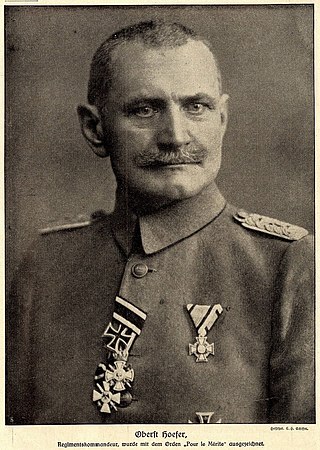
Karl Höfer also Hoefer; was a German general. During World War I he became known as the Held vom Kemmelberge (hero of Kemmel hill) after his division had captured the Kemmelberg during the Fourth Battle of Flanders.

Rosa Luxemburg is a 1986 West German drama film directed by Margarethe von Trotta. The film received the 1986 German Film Award for Best Feature Film, and Barbara Sukowa won the Cannes Film Festival's Best Actress Award and the German Film Award for Best Actress for her performance as Rosa Luxemburg.
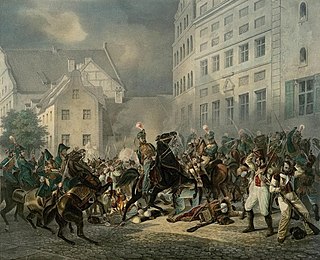
The Battle of Stralsund on 31 May 1809 was a battle during the Dano-Swedish War of 1808–1809 and Franco-Swedish War, part of the Napoleonic Wars, between Ferdinand von Schill's freikorps and Napoleonic forces in Stralsund. In a "vicious street battle", the freikorps was defeated and Schill was killed in action.

The Ruhr uprising or March uprising (Märzaufstand) was a left-wing workers' revolt in the Ruhr region of Germany in March 1920. It initially took place in support of the call for a general strike issued by the Social Democrat members of the German government, the unions, and other parties in response to the right-wing Kapp Putsch of 13 March 1920.
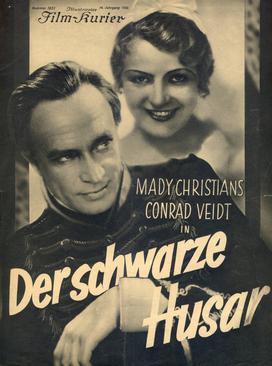
The Black Hussar is a 1932 German historical drama film directed by Gerhard Lamprecht and starring Bernhard Goetzke, Conrad Veidt, Mady Christians, and Wolf Albach-Retty. It premièred at the Ufa-Palast am Zoo on 12 October 1932, part of a whole string of 'patriotic' movies released in the late days of the Weimar Republic.

The Silesian Eagle was a medal awarded to members of the German right-wing paramilitary group Freikorps Oberland for three or six months of service, as well as for fighting during the Silesian Uprisings during the Weimar Republic.
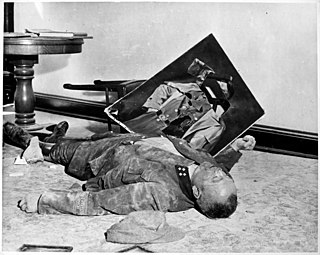
Bataillonsführer is a German paramilitary title that has existed since the First World War. Originally, the title of Bataillonsführer was held by the officer commanding an infantry battalion. After the close of World War I, the title became one of several paramilitary ranks in the Freikorps.
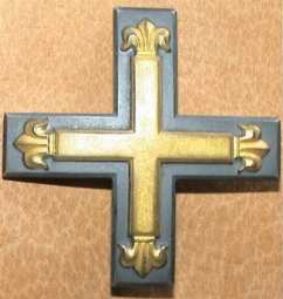
Awards of the German Freikorps were unofficial military awards displayed by various veteran organizations in Germany during the immediate aftermath of World War I. Upon the assumption of the Nazi Party to power in 1933, nearly all Freikorps awards were prohibited for wear on Party, State, and Military uniforms. Two notable exceptions were the Baltic Cross and Silesian Eagle. All other Freikorps awards were declared obsolete with World War I service thereafter recognized by a single award, known as the Honour Cross.

The German Knight's Cross was an award of the German Freikorps which existed after the close of the First World War. The award was created in 1919 and was designed by Captain Alfred von Randow. Known alternatively as the "Randow Cross", the decoration was issued mainly to members of the Free Corps formation "Volunteer Detachment von Randow" which had been raised in January 1919 for security in the Baltic region.
References
- Lumsden, R. (2001), Medals and Decorations of Hitler's Germany (Shrewsbury, MBI Publishing)